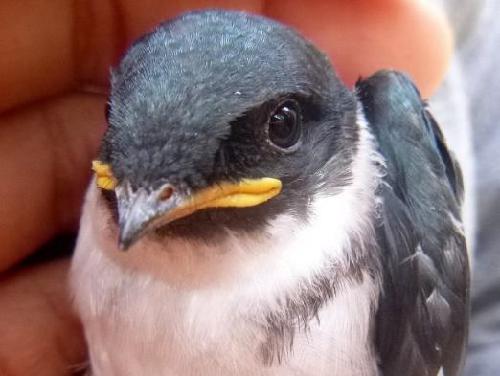Christopher Justin Proctor
Other projects
14 Apr 2014
Uncovering Life History Traits and Conservation Strategies for the Golden Swallow, Tachycineta euchrysea sclateri, a Threatened and Endemic Passerine on the Island of Hispaniola
The Golden Swallow Project is designed to act as a catalyst between communities and the environment, using the swallows as a tool to project larger ideas of conservation, sustainability, and stewardship in the Dominican Republic. Simultaneously, research rigorously tests life history theory, divulging information that can offer insight into the species’ habitat and resource preferences which can then be directly applied to short- and long-term management and sustainability efforts for remaining Golden Swallow populations.

Hispaniolan Golden Swallow (Tachycineta euchrysea sclateri). © Parque Nacional Juan Bautista Pérez Rancier
My graduate thesis research through Cornell University focuses on studying the limitations and determinants of the reproductive success of the Golden Swallow (Tachycineta euchrysea sclateri), a threatened passerine endemic to the island of Hispaniola, and using that information to develop a comprehensive conservation plans for the species. The fundamental core of the project is the development and amplification of extensive networks of artificial nest-boxes at high priority Golden Swallow breeding sites in the Dominican Republic. The next-boxes provide the species with a refuge in which to raise and fledge their young against the growing threats of natural cavity limitation and increased rates of depredation by invasive mammals. Additionally, the boxes allow for a unique opportunity to develop integrative methods of outreach that connect local communities to something tangible in nature, ultimately creating through the swallows a sense of stewardship ecosystem-wide.
From the effort’s initiation, the project has emphasised an open door policy, in that any party interested in becoming involved with the future of the Golden Swallow was welcome to jump on board. This approach has led to an unprecedented number of successful partnerships in a country that has long struggled to unite its key players in addressing growing environmental concerns, and has ultimately transformed what was an initial scientific study into a multi-faceted, conservation-focused collaboration known as the Golden Swallow Project. Our social outreach now focuses on gathering local strength around the idea that conservation can only succeed when it is supported by a collaboration of people who can collectively draw on each other’s strengths to make better decisions than they could alone.
Through nest-box monitoring programs, teams are continuing to gather annual, detailed information on the survival, demographics, morphology, and behaviour of the species. Data collected provides us the information needed to make well-informed decisions on where to focus current conservation efforts. For the past three years, the primary study site has been located in the high altitude pine forests of the Dominican Republic’s tallest mountain range, the Cordillera Central. Through continued generous support from the Rufford Foundation, we are now able to integrate the Golden Swallow into the Caribbean Birding Trail (CBT), a regional project aimed at developing local capacity around Key Biodiversity Areas (KBAs) throughout the Caribbean. Throughout the coming year, the CBT will be focusing its attention on Parque Valle Nuevo, and the opportunity is extremely favourable to promote the Golden Swallow as a local symbol and destination for the trail. By means of guide-training workshops, extensive interpretive signage, and an observation tower, we can more firmly solidify the continued monitoring surrounding the breeding habitat of the swallows as well as the continued education of those visiting the park. Additionally, support from the Rufford Foundation will allow us to fund local Dominican students through scholarships aimed towards studying an element of Golden Swallow life history that not only increases our knowledge of the species, but allows for students to gain valuable field skills – thus strengthening their resumes for future work in ornithology - while working directly with their own endemic avifauna.